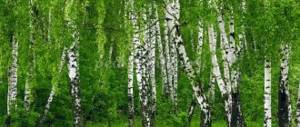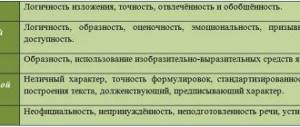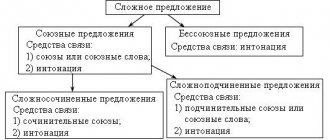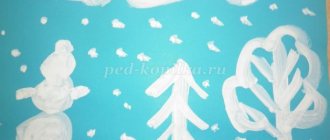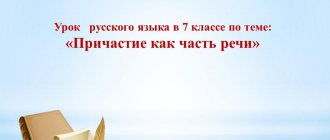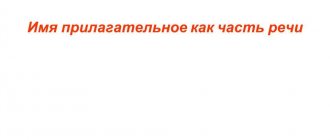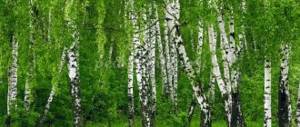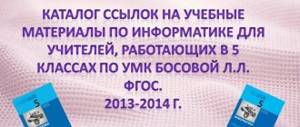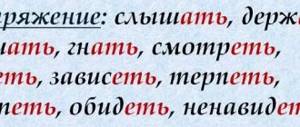Open lesson “Text and its features”
Technological map of the Russian language lesson.
Lesson topic: text and its features.
Class: 6
GOALS:
- to form in children a general concept of the text based on an awareness of its main features.
— check children’s knowledge using text, teach how to work with text.
— improve the ability to determine the topic and main idea of the text.
— develop students’ attention, thinking, and speech.
— to cultivate a love for the Russian language, love and respect for nature.
TASKS:
1. Enrichment of vocabulary.
2. Formation of students’ monologue and dialogic oral and written speech skills, literate, conscious writing skills.
3. Repeat the characteristics of the text.
TYPE OF LESSON : learning new material
technologies used :
— educational role-playing game;
— group work technology;
— individual tasks;
Lesson methods : interactive: interaction in dialogue mode.
Form of organization of educational activities : collective, group, individual, work in pairs.
Visual aids : handouts (cards with texts), presentation.
Equipment : projector, screen, cards.
During the classes
- Organizing time.
Teacher: Hello, guys!
- Updating students' knowledge.
In the last lesson, we recalled the rules for placing a vowel in the unstressed ending of a verb. At home you should have made a card. Show me, please.
Now let's check how you have mastered the material. Sign the leaves. I will dictate the text, you will need to insert the missing letter, highlight the endings, and determine the conjugation.
Card:
By the end of winter, the seeds ripen in the spruce cones... The scales of the cones rise... and the seeds spill out onto the snow. There are no longer any of them there. But while the seeds from the cones have not yet spilled out, it’s time to collect them.
Let's check, swap leaves.
(check slide on the board).
- Students' motivation and goal setting.
What have we analyzed now? Offers?
Children: yes
Teacher: how are words in sentences connected?
Children: with the help of meaning.
Teacher: what part of the word helps to coordinate words with each other?
Children: ending.
Teacher: words are connected using endings in sentences, but from several sentences united by one topic it turns out?
Children: text
- Teacher: what is a text? What topic will we review today?
Children: a text is one or more sentences that are connected to each other in meaning.
- The activities of students to master new primary knowledge and develop new skills.
Teacher: please open your notebooks and write down the date and topic of our lesson.
Teacher: Well done! Today we need not only to find out what a text is, but also to get acquainted with its components. To do this, let's move to the country of textual criticism. To travel to this country we need a guidebook. Due to a strong hurricane, the names of cities were scattered throughout the country, we will need to return these names to their places. (I hand out a flower). To fill the flower we will need to pass tests.
Please look at the board.
Two entries. On the left is a set of sentences, and on the right is text.
| K..the little boy broke the vase. The astronauts were preparing for the flight. There was an interesting program on TV. And mom went to the store. | Everything is good in nature, but... yes - the beauty of all nature. Water is alive, it lives or is agitated by the wind, it moves and gives life and movement to everything around it. |
| The kitten broke a vase. The astronauts were preparing for the flight. There was an interesting program on TV. And mom went to the store. | Everything is good in nature, but water is the beauty of all nature. Water is alive, it runs or is agitated by the wind, it moves and gives life and movement to everything around it. |
Teacher: before we start analyzing, I will ask you to write down all the words with missing spellings, explain their spelling and name the type of spelling to which all the words belong. Find the extra word and explain why it is such?
Teacher: Let's work on the notes. Can we call them texts? Why? How is the right entry different from the left one?
Children: the entry on the right can be called text, because we understand who they are telling us about.
-From the right entry we learn that water is the beauty of all nature.
Teacher: what feature does the text have?
Teacher: what is the topic of the text?
Children: this is what or who is said in the text.
Teacher: what does the text say? How is water described? What is the topic of this text?
Children:
-The text talks about water.
- Water.
Teacher: Well done!
Why is this or that text created? Any text expresses some kind of thought, to find it, you need to ask the question: what did the author want to say with this text? What is he calling us to? Determine the main idea of this text.
Children: Water gives life to everything that surrounds us. It contains the beauty of all nature. The author encourages us to love and take care of nature and everything that surrounds us.
Text features. First sign : sentences are closely related to each other in meaning, i.e. united by a common theme and main idea. Let's draw.
Teacher: Has the theme and main idea of this text been revealed? This means the text is complete and complete.
The second feature of the text is its completeness and semantic completeness. Let's draw.
Teacher: in the country of textual criticism there are also schools where students study. An unpleasant story happened to one of the students; to help him understand what happened, let's listen to his story.
I ran into the office, everyone was already sitting in their seats. I jumped out of bed and realized that I had overslept. My classmates were already racking their brains over the problems. Hearing the annoying call, I decided to look at my watch. I ran all the way and thought that today was the most important test in algebra. After putting on different socks, I spent a long time looking around the room for a sweater.
Teacher: what is confused in his speech?
Children: consistency.
Teacher: for every two desks you have these sentences. Make a text out of them. They work in mini groups. Read the text.
The third feature of the text is the sequence of presentation. Let's draw.
Teacher: can we find a title for the text? Which? What does this title express?
Children: yes, “I overslept”, “I’m late for school.” The title expresses the main idea.
The fourth feature of the text is the presence of a title, which expresses the main idea. Let's draw.
Teacher: Who will try to name all the features of the text?
Children: list.
Teacher: now we can give a definition to the concept of text, so what is text?
Children: A text is a combination of sentences, related in meaning and grammatically, arranged in a certain order, having a topic and main idea. (Write in a notebook)
Dynamic pause
Teacher: Let's rest a little.
When I say the word title, show me the house above you.
When I tell you the sequence of presentation, twirl your hands.
When I say the topic, give yourself a hug.
When I say semantic completeness, clap once.
- Primary consolidation of skills for using new knowledge in practice. Work with text.
Teacher: listen to a short excerpt from a work we met last year.
You won't find this lake on the map. It's small. Small, but memorable for Vasyutka. Still would! It's no small honor for a thirteen-year-old boy to have a lake named after him! Even though it is not big, not like, say, Baikal, Vasyutka himself found it and showed it to people. Yes, yes, don’t be surprised and don’t think that all the lakes are already known and that each has its own name. There are many, many more nameless lakes and rivers in our country, because our Motherland is great and, no matter how much you wander around it, you will always find something new and interesting.
Teacher: what work is this fragment from? Who is author?
Children: Viktor Astafiev “Vasyutkino Lake”
Teacher: prove that this is a text. Find text features.
Teacher: Title this text so that it reflects the theme of the text, then the main idea and write it down.
- Primary check of the level of mastery of new knowledge.
Let's check how you have mastered the topic of our lesson: I will read 7 statements, if you think that the statement can be answered yes, then raise your green palm, if no, then raise your red palm.
1. The text consists of sentences.
2. It is impossible to come up with a title for the text.
3. All sentences in the text have boundaries.
4. The sentences in the text are not consistent.
5. The text always talks about something or someone.
6. Text cannot be divided into parts
7. Sentences in the text are united by a common theme and main idea.
- Reflection
Teacher: Today we worked very fruitfully, and I would like to know what new things you learned today and what you learned. To do this, you will fill out the diagram on your pieces of paper. After checking your test and analyzing your activities in class, I will evaluate and assign marks to everyone.
- Homework . Repeat the characteristics of the text. Compose your own text on the topic “Autumn” 7-10 sentences.
Let's smile again and give each other warmth and hope!
Methodological development of a lesson on the topic “Text. Basic features of a text" (grade 6)
Text. Main features of the text.
Lesson type: speech development lesson.
Planned educational results:
Subject: know the concepts of “text”, “main idea of the text”, be able to determine the topic and main idea of the text, use the term “text”, understand the nature of the information in the proposed text and supplement and transform it; realize and develop the intent of the statement in a independently created text.
Meta-subject: students will be able to apply the acquired knowledge at the interdisciplinary level (in foreign language lessons, history, geography, literature), and will be able to consciously use speech means in accordance with the communication task.
Personal: will be able to demonstrate communicative competencies in the process of educational activities.
Equipment and materials: textbook on the Russian language for grade 6 (M.T. Baranov, T.A. Ladyzhenskaya, L.A. Trostentsova, N.V. Ladyzhenskaya, L.T. Grigoryan, I.I. Kulibaba); Handout.
During the classes:
- Organizing time. Checking the class's preparedness for the lesson.
- Organization of the learning situation. Goal setting.
Many guests come to Orenburg. So, we, together with residents of different cities (and even countries), go on a city tour. Let's make a plan for the excursion (or tell us how it happened). Continue the sentence: We go with….
What is the role of the first sentence? (It very clearly defines the structure of both the second sentence and the movement of thought in the paragraph or text)
What information in your text will be main and what will be optional?
Formulating lesson objectives.
- Creative practical activity. Working with handouts.
- Read the beginning and ending sentences of the text carefully. Is it possible to understand what will be discussed? (material presented in slide form)
Legend says that a long time ago there lived a girl. And she was of extraordinary beauty
…………………………………………………………………………………………………..
She stands in an ermine coat, her braids sparkling with silvery frost.
Physical exercise!
- Task: complete the sentences, focusing on the context.
The legend is _______________ that a long time ago there lived only __________ in the world. And she was ____________ extraordinary. Thin, slender, ___________ golden to the ground. She was affectionate and friendly. Everyone _______ her, they only talked about her. _________ envy crept into the heart of the evil __________: they don’t talk to her, they don’t admire her. She decided to _________ that girl from the world and turned ___________ the witch into a tree. And then ___________ is also of unprecedented beauty: the white-trunked branches are green, like __________, intertwined. It makes noise, gently shelters travelers from ___________ in its shadow. People admired the tender __________ and _____________ called it a birch tree. The witch gets even angrier. She let in the cold. Only the birch tree is a new beauty ______________. He stands in an ermine coat, his braids _______________ sparkling with frost.
Author's version (presented as a slide)
Legend says that a long time ago there lived a girl. And she was of extraordinary beauty. Thin, slender, golden braid reaching to the ground. She was affectionate and friendly. Everyone loved her and only talked about her. Black envy crept into the heart of the evil witch: they are not talking to her, they are not admiring her. She decided to take that girl out of the world and the evil witch turned her into a tree. And that tree is also of unprecedented beauty: the white-trunked branches are green, like braids, intertwined. It makes noise and gently shelters travelers from the heat in its shade. People admired the delicate tree and affectionately called it birch. The witch gets even angrier. She let in the cold. Only the birch tree turned into a new beauty. She stands in an ermine coat, her braids sparkling with silvery frost.
Creation of text in accordance with the assignment, analysis and discussion of the best works.
As a conclusion, students are asked to create a cluster on the topic “Text and the main features of the text”
- Primary consolidation (exercise based on textbook texts). Ex. 73, p. 41.
Checking, analyzing and discussing the work.
- Reflection stage (filling out the self-assessment sheet)
- Homework (differentiated)
- You have been asked to tell about the products of a confectionery company in the city. What features of the advertising text will you take into account when writing your work? (the work can be presented in the form of a folding album, layout)
- §15, ex. 72.
Literature:
- Dorotina I.G. Modern models of Russian language lessons in grades 5-9: a manual for general education teachers. organizations / I.G. Dobrotina. – M.: Education, 2014.
- Russian language and literature – 2020, No. 6.
- Russian language. 6th grade. Textbook for general education. organizations. At 2 o'clock /M.T. Baranov, T.A. Ladyzhenskaya, L.A. Trostentsova and others; scientific ed. N.M. Shansky/ - M.: Education, 2020.
Comprehensive text analysis in Russian language grade 6
Russian language
Didactic material will help students repeat the main topics of the Russian language.
Complex text analysis grade 6
(1) Of the trees in the North, you most often see spruce and pine. (2) These are eternal rivals.
(3) Spruce grows in wetter places. (4) Its roots are shallow, and in the Far North this helps it fight the deadening touch of permafrost. (5) Spruce is shade-tolerant and easily lives under the canopy of taller, less dense pine. (6) But the branches of the spruce densely cover the sun, and it is always dark in the spruce forest.
(7) Pine loves dry sandy hills. (8) The trees stand in small groups, and the pine forest is always solemn and light. (9) But pine can also grow in open wetlands. (10) The powerful root system of the pine breaks through the layer of frozen mosses, and the pine takes root in the swamps. (11) Pine grows faster than spruce. (12) She is light-loving, and her crown on a slender trunk seems to be spread out in the high sky. (13) But under the canopy of these transparent crowns young fir trees are growing. (14) They stretch out, and sometimes they manage to shade and drown out the pine forest.
(according to N. Pokshishevsky)
1.Define the text style__________________________________________________________
2. What type of speech is the text________________________________________________
3. Write down words with an alternating vowel in the root.________________________________
4. Write down the grammatical basis of sentence 4
5. Write down words with the unstressed vowel being tested, select a test word
__________________________________________________________________________________________________________________________________________________________________________
6.Write down words with a paired consonant at the root of the word, select a test word
7. From sentences 6-8, write down the word formed by the prefix method
_____________________________________________________________________________________
8. Write down words with the same root
9. Find compound sentences and write their numbers
_____________________________________________________________________________________
10. Determine the method of forming the word light-loving
11.From sentence 1, write down all the words in which all consonants are soft
12. Write down a word that has more letters than sounds___________________________
13. Write down a word that has more sounds than letters___________________________
